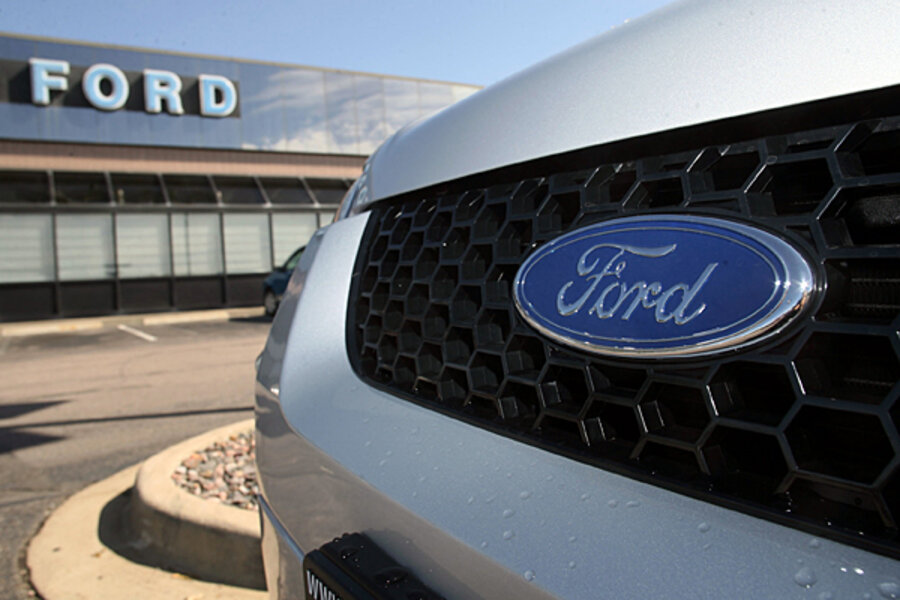Ford goes off the grid with new solar-powered car
Loading...
It used to be that leaving your car out in direct sunlight only meant it would be quite painful to touch the scorching hot steering wheel for a few minutes.
Ford isn’t making that go away, but it is providing a new incentive for leaving your car in the sun: an extra four hours of driving. At International CES next week, Ford will reveal the C-Max Solar Energi, a hybrid vehicle that combines solar panels, electricity, and gas for power.
The concept car has solar panels built into the top of the roof that capture energy when the car is in direct sunlight. If the Energi is not in direct sunlight, it can be plugged in or filled up with gas. Overall, it has a range of 621 miles, 21 of which are entirely electric.
Ordinarily, solar-powered cars have to be lightweight, coast over long distances, and recharge frequently. But the Ford Energi uses Fresnel lens technology to fully utilize whatever sun is shining, according to Ryan Whitwarm on Extreme Tech.
“A Fresnel lens is a type of compact lens originally developed for use in lighthouses that acts as a magnifying glass,” he writes. “When parked under the Fresnel lens canopy, the C-Max Solar Energi will track the sun and roll slowly backward or forward to keep the most intense area of solar energy concentrated on the panels.”
However, the car has to be parked directly underneath this canopy (it isn't something built into the panels) in order to fully utilize the sun's rays. Or else, it only gleans the average amount of energy from the sun (in other words: not much).
The car also uses panels from California-based company SunPower, which have a more flexible design offering more coverage for the curved roof of the car.
For the time being, this car is parked solidly in the concept lot, and Bloomberg’s Tom Randall says this is probably for the best as the company figures out structural kinks such as the fact that it takes a full day of sunshine to even get the four hours of driving (“convenient if you leave for work everyday at 9 p.m.”) and that many parking garages are underground, or have no access to direct sunlight.
He points out, though, that at least it shows that Ford is considering a technology that could be a potential game changer.
“The purpose of the C-Max concept is to show that solar efficiency has improved so much that a few square feet of panels on a car can push the boundaries of what’s possible with the hybrid-electric vehicle, says Mike Tinskey, Ford’s director of vehicle electrification and infrastructure,” Mr. Randall writes. " 'We need to get the conversation started.’ ”








